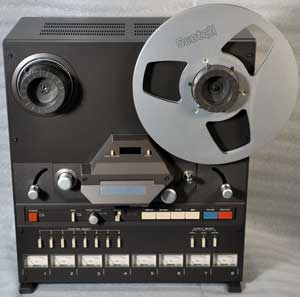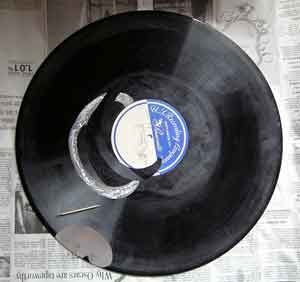
If shrunken and displaced in various directions,
it is impossible to play the disc in a continuous manor. The playing stylus
will jump back and forth, picking up sound from various grooves, often
repeating and skipping. If the the material is noisy, that would add to
the confusion in editing, ditto unfamiliar dialogue or complicated
music.
If they have not moved, but there only gaps, the prospects are better.
Radial cracks are better, cracks in the direction of the grooves are worse.
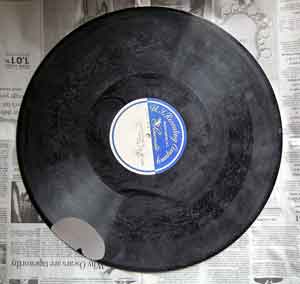
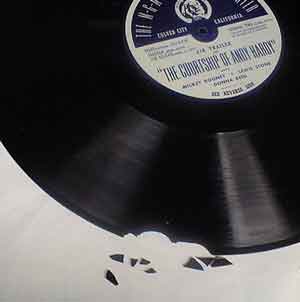

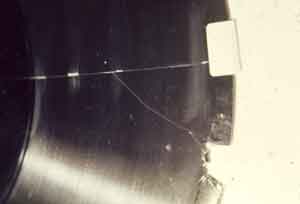

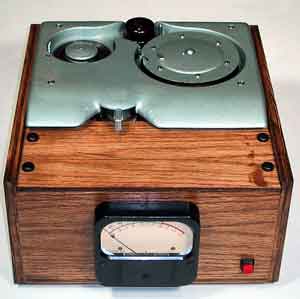
Even wire recordings get
special treatment. At left is our custom machine with solid state,
low noise, accurately equalized electronics. Be aware that
wires are often a tangle waiting to happen. The worst problem is splices.
They are rarely made well and either come apart in the play/rewind or cause
a big spill of wire in the process. Fortunately, this results in little
actual sound loss because they run at 24 ips. So, we record the whole wire
in it's entirety. Then we rewind and pray it does not spill. We rarely
loose the recording, but sometimes there is some loss of wire.
Because playing times are often long, and can contain long periods where the
recorder was just left on to record the conversation of, say a geriatric or
similar, we cannot know what is intentional and will produce CDs with
all of it. The basic cost to a CD is $60.00. If there is some complicated
editing desired, that is additional.
For those with needs of vintage sounds we maintain a large archive of vintage and audiophile sounds, including early stereo from the former, Robert Oakes Jordan and Associates.
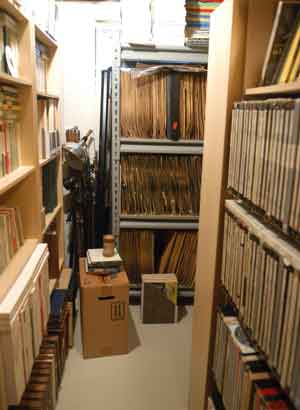
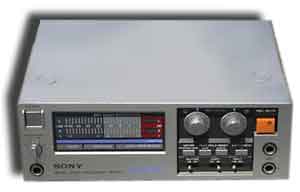
Old Digital / PCM recordings made on videotape can be transferred using our Sony PCM-F1.
We can decode a number of different noise reduction methods, such as DBX I, DBX II, DOLBY B

